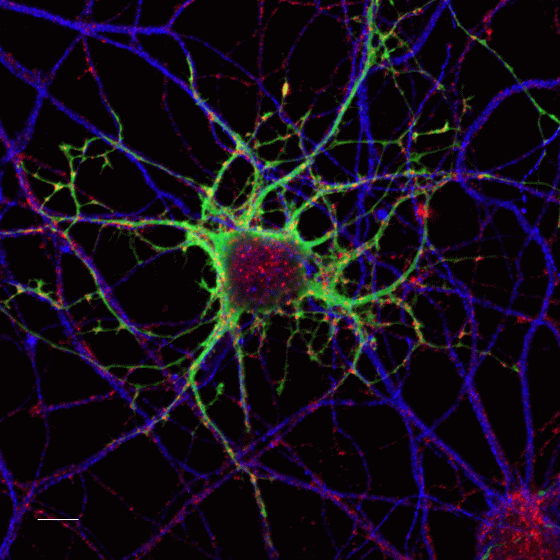Why do synesthesia occur, such as “I can hear colors” and “I can see time”?

By
A special perception that produces different types of sensations as well as general sensations for a given stimulus is called synesthesia . People who have a synesthesia of “sounds appear as colors” and “sounds as sounds” are estimated to be 4% of the total population, and most of them do not interfere with daily life. In some fields, synesthesia can be beneficial. The clear cause of synesthesia has not been scientifically identified, but new clues have been announced in the latest research, and it seems that it has approached the elucidation of the mechanism of “perception” performed by the brain.
Rare variants in axonogenesis genes connect three families with sound-color synesthesia | Proceedings of the National Academy of Sciences
http://www.pnas.org/content/early/2018/02/27/1715492115
Why Can Some People 'Hear' Colors?
https://www.livescience.com/61930-synesthesia-hear-colors-genes.html
There are countless types of synesthesia, and the triggers that cause synesthesia and the reactions that occur are different. Synesthesia triggers are not limited to hearing and vision, but there are also synesthesia that can be triggered by other five senses, such as “Look at letters and feel the color and taste”. And the synesthesia that is triggered by the same type of perception may produce different synesthesia. For example, if there are two sympathizers who feel the color due to sound, even if they hear the same sound, one sympathizer feels red and the other sympathizer feels blue.
New clues to elucidate the mechanism of this synesthesia can be found in a paper published at the National Academy of Sciences on March 5, 2018 by Amanda K. Tilot in the Netherlands. “We recognize synesthesia as a biological phenomenon,” said Simon Fisher , professor of linguistics and genetics, one of the co-authors and the director of the Max Planck Institute for Psycholinguistics . For example, if a synesthesia about sound recognizes the sound as a color and scans the brain, you can see that the brain of that synesthesia is active both in terms of vision and hearing. '' Said. In addition, when each sympathizer recognizes a different color for one sound, the parts activated in the brain are different. These were shown in another study previously done by Fisher .
In a new study, there was a discovery that `` the same kind of synesthesia is different in recognition and different parts of the brain are activated '', Fisher said, `` I found out that each of them has a different brain network. ”

By
Fisher et al.'S research team conducted research based on the idea of genetics in order to discover the cause of this phenomenon: “Even the same type of synesthesia recognizes differently and activates different parts of the brain”. It was. Since past studies have shown that synesthesia are born frequently among relatives, Fisher et al. Starred that the cause of synesthesia may be due to genes. To prove this idea, researchers looked for families in families with multiple synesthesia for at least three generations, and found three families that would meet the conditions and cooperate in the study. All three families are families that have born synesthesia with a sense of sound. And when any synesthesia hears a sound, a specific color can be seen, but this synesthesia is not exactly the same.

By
According to the results, it was not possible to fundamentally elucidate the cause of synesthesia. According to researchers, a single gene that can explain synesthesia was not found among the genes common to all three families.
However, we found a gene that seems to be a new clue to solve the mystery of synesthesia. In 3 families, all 3 generations of synesthesia had 37 genes that seemed to have mutations compared to the genes of ordinary people.

Since this study has a small number of subjects, it cannot be said that all 37 genes have affected synesthesia. Fisher et al., However, studied what part of the body functions for all 37 gene “candidates” and how they affect body development. Fisher said about the research results: “Candidate mutations that appear to have an effect on synesthesia had a significant common point that would be a biological research theme,” these are It is revealed that it was a gene that makes a branch “axon” extending from a neuron “neuron” responsible for transmission and processing of information.
Fisher said, “The location where these genes develop is consistent with the“ location that senses and activates synesthesia ”shown during the brain scan. In other words, these genes identified in this study are related to how the brain network is wired, and the idea that these genes change the brain is different in the synesthetic brain It is possible to explain the cause that seems to be wired.

Fisher and colleagues have argued that studying the mutations in the genes identified in this study would help elucidate how they alter the structure and function of the human brain. Therefore, as of 2018, he is looking for volunteers to participate in the research. Fisher says, “Studying synesthesia can teach us the essential framework for how the human brain creates sensory representations of the outside world.”
Related Posts:
in Science, Posted by darkhorse_log







